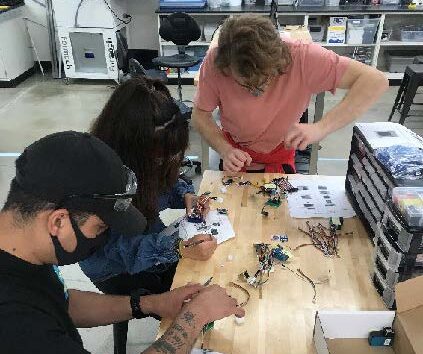
By Abbie Nistler
Project Community-Based Educational Outreach to Address Air Pollution was created by Casey Mullen to increase at-home air sensors in houses in high-impact communities. The goal of her project was to address the social inequities in the distribution of nongovernmental air quality sensors and educate communities on local air quality issues.
Due to the geography of the Salt Lake Valley, air pollution is a constant problem for the valley and its communities. The air in this area contains high amounts of particulate matter (PM2.5, PM10), ozone, nitrogen oxides (NOx), sulfur dioxide (SO2) and vanadium oxide (VOX). High concentrations of these chemicals in the air we breathe can negatively affect people’s health, especially children. Poor air quality also exacerbates existing health issues, especially asthma. Bad air quality negatively impacts minority communities more. Mullen was aware that minorities’ communities are usually more affected by poor air quality, and this motivated him to try to increase access to air quality data through at-home sensors and educational outreach.
To kick off this project, Mullen and his team determined where in the Salt Lake Valley sensors were needed the most. Once sensors were assembled by Mullen and a team of undergraduates, they were given to 30 households with children that have asthma. At the time of sensor installation, undergraduates and Mullen conducted interviews in order to gain information regarding each family’s health history and understanding of how air quality can affect their health. Another team of students focused on research surveyed the families, hoping to collect data around how their awareness of air quality issues changed throughout the project. At the end of the data collection period, for both the pilot study and the main study, Mullen and the students disseminated informational packets to all participants in English and Spanish containing relevant air quality and air quality sensing information. The information gathered in these packets was based on questions and topics raised by participants during the data collection phase of the project.
The project also integrated an educational component for sixth grade students at Guadalupe charter school. Mullen and undergraduate students met with sixth grade classrooms at the Guadalupe Charter School to discuss their understanding of air quality and how it impacts people. Mullen and undergraduate students in an environmental capstone course met with sixth grade classrooms at the Guadalupe Charter School. Over the course of three semesters, the students created educational content and led the program for the sixth grade students. This project highlights air quality issues and environmental justice issues within the Salt Lake Valley.
